High jewellery brand Boghossian is taking us on a royal trip with Palace Voyages, their latest collection that references 14 historical grand palaces. David Ho takes a look at the shining, shimmering, and splendid creations
Boghossian have long drawn inspiration from the Silk Road, where founder Ovaness Boghossian first began the business in 1868. Now they return to it and makes a trek from East to West by drawing a line from Beijing’s Qianlong Palace to the Brighton Pavilion in the UK.
The result are jewellery pieces that reflect the artistry and cultural motifs of various royal residences. 14 distinct palaces have inspired many unique pieces that are faithful to the architectural and historical details of each location.
Qianlong
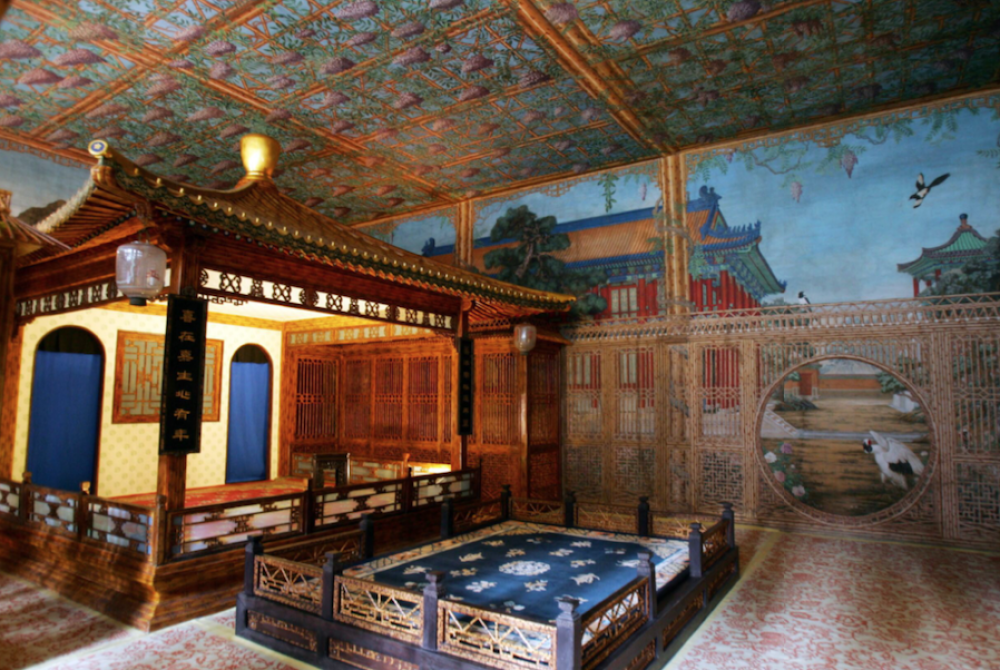
The Qianlong Palace, also known as the Palace of Tranquil Longevity, was designed to be the retirement retreat of the Qianlong Emperor within the Forbidden City. Its construction began in 1771, but the Emperor never got to enjoy it as he never fully retired from active rule. The marquetry at the Retirement Lodge here have inspired exquisite pieces in a mix of diamonds, white jade and green jadeite that reference the sense of classical form intended by the Qianlong Emperor, as well as the importance of asymmetry and empty space in traditional Chinese art.
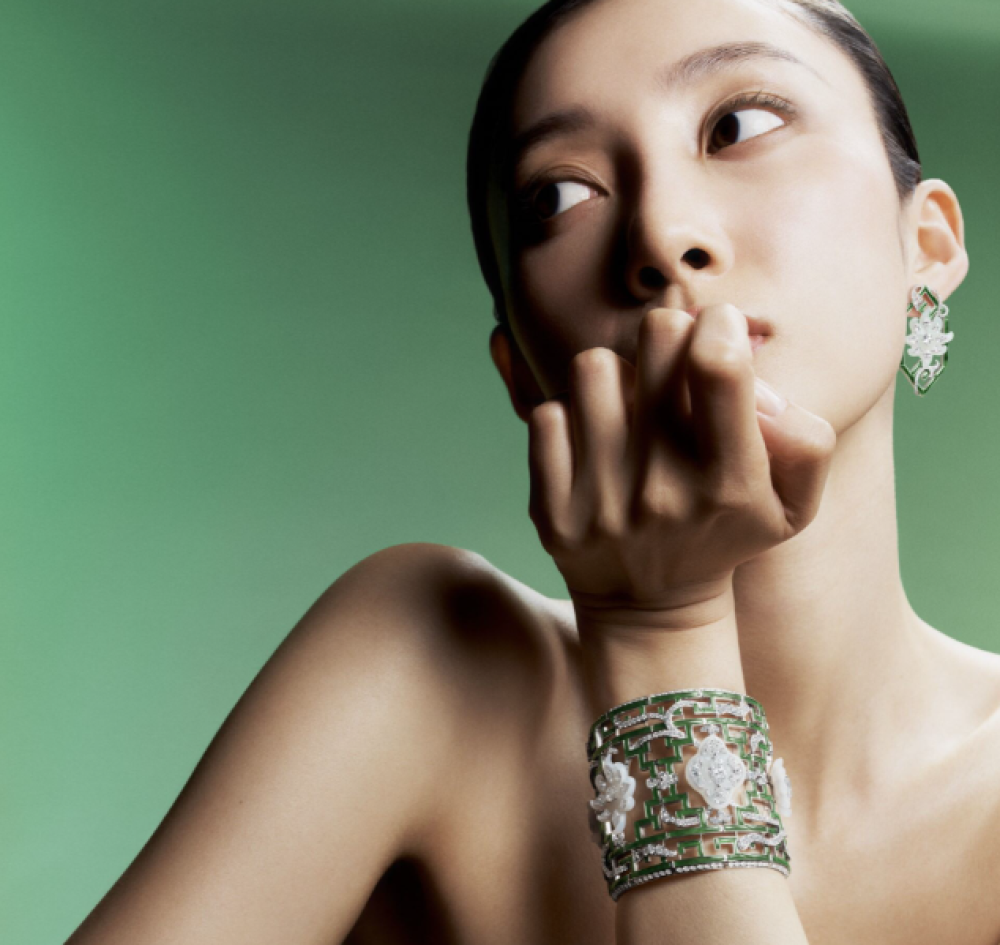
Taman Sari
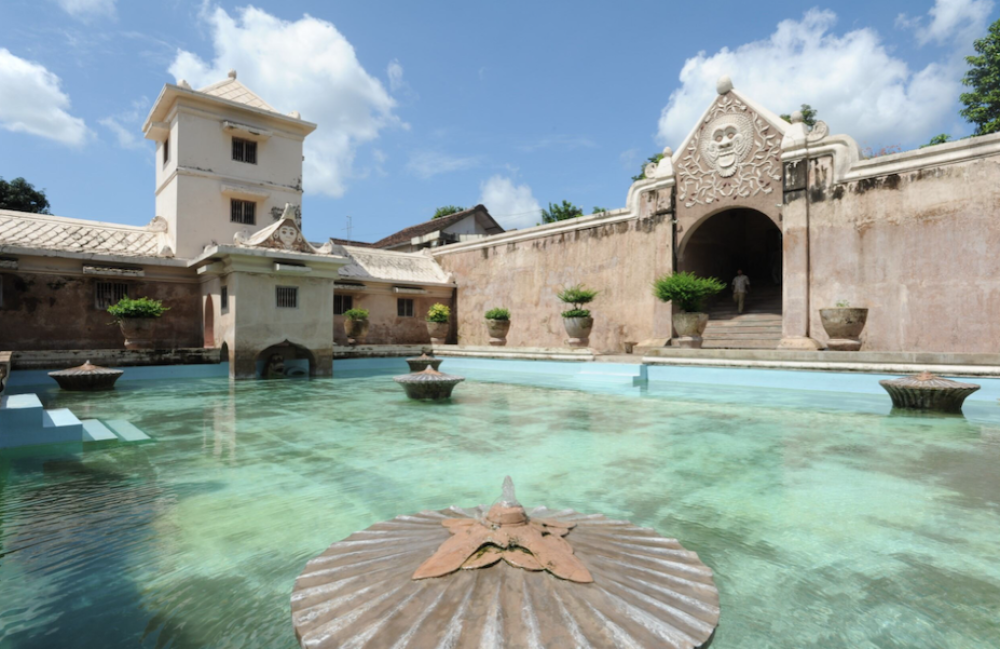
Meaning “garden of flowers”, Taman Sari was built in the late 18th Century as a series of buildings and pavilions on the site of a bathing spring by the Yogyakarta Sultans. Pools and buildings here are said to be connected only by hidden, underwater tunnels. So naturally, the Flowing Droplets set is meant to evoke water with diamonds and Paraiba tourmalines. The Floral Cascade ensemble then take on the lotus shapes on the fountains at the centre of each pool, with tassels of flowing baguette diamonds and emeralds.
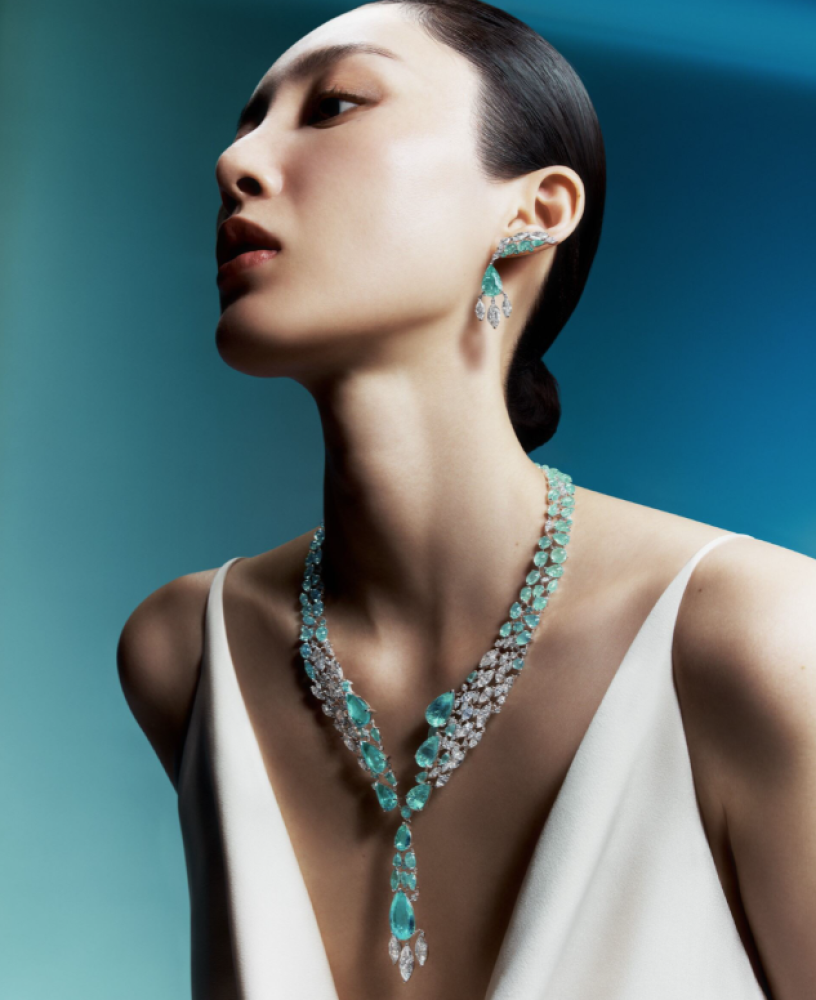
Grand Court
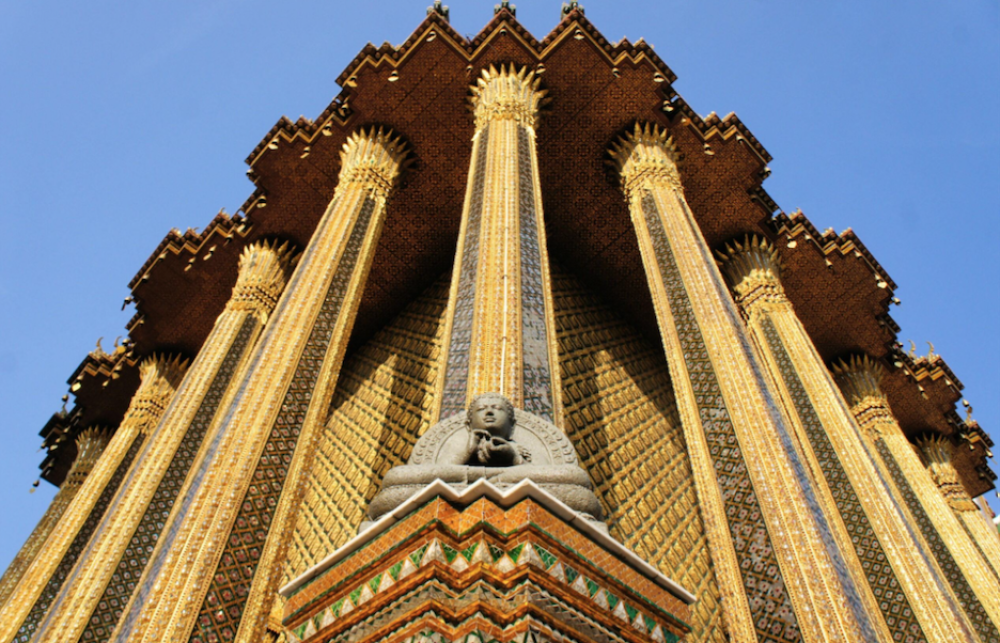
Constructed in 1782, Bangkok’s Grand Palace was conceived as the residence of the Kings of Siam, now known as Thailand. The temple of the Emerald Buddha is also located here. So with royalty and saffron robes in the same place, the use of yellow and white diamonds makes sense to match the intensity of the palace’s visual glow.

Jaipur
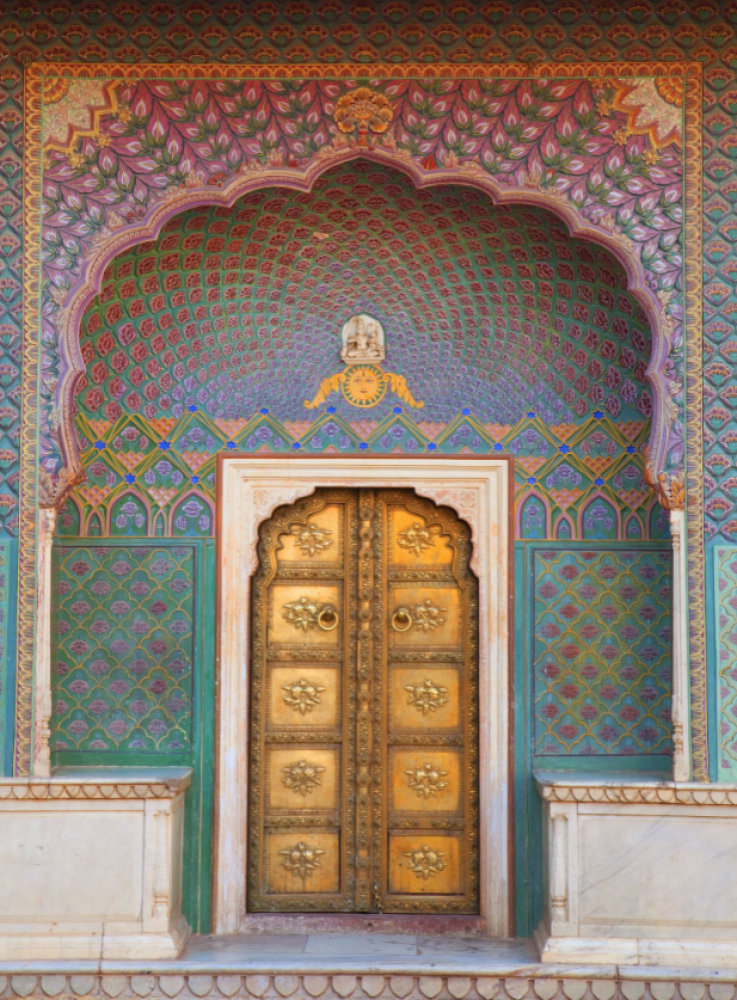
Jaipur’s City Palace was built in the late 1720’s and early 1730’s to house the ruling Maharaja Sawai Jai Singh II’s family. The inner courtyard here is renowned for the four gates dedicated to four Hindu gods that represent the four seasons. Boghossian’s sets here are a tribute to the lines and colours of two of the gates.
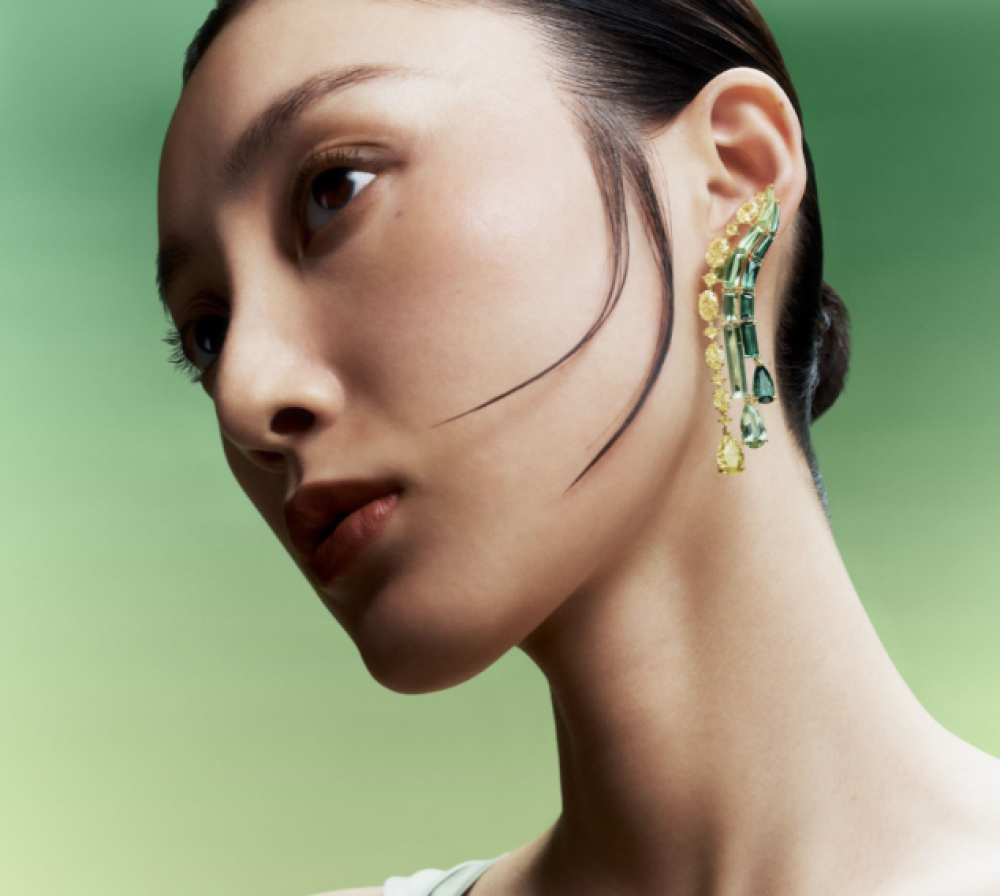
Mysore

Mysore is known as the City of Palaces and one of the most well known royal residences here is the Amba Villas Palace, commissioned in the late 19th Century by the Maharaja Krishnaraja Wodeyar IV and designed by British architect Henry Irwin. The majestic arches and pillars at the ceremonial Durbar Hall was added in the 1930’s. Boghossian has selected precious stones that reflects the colours and elements of the interior architecture of this ornate residence for their creations.

Persepolis
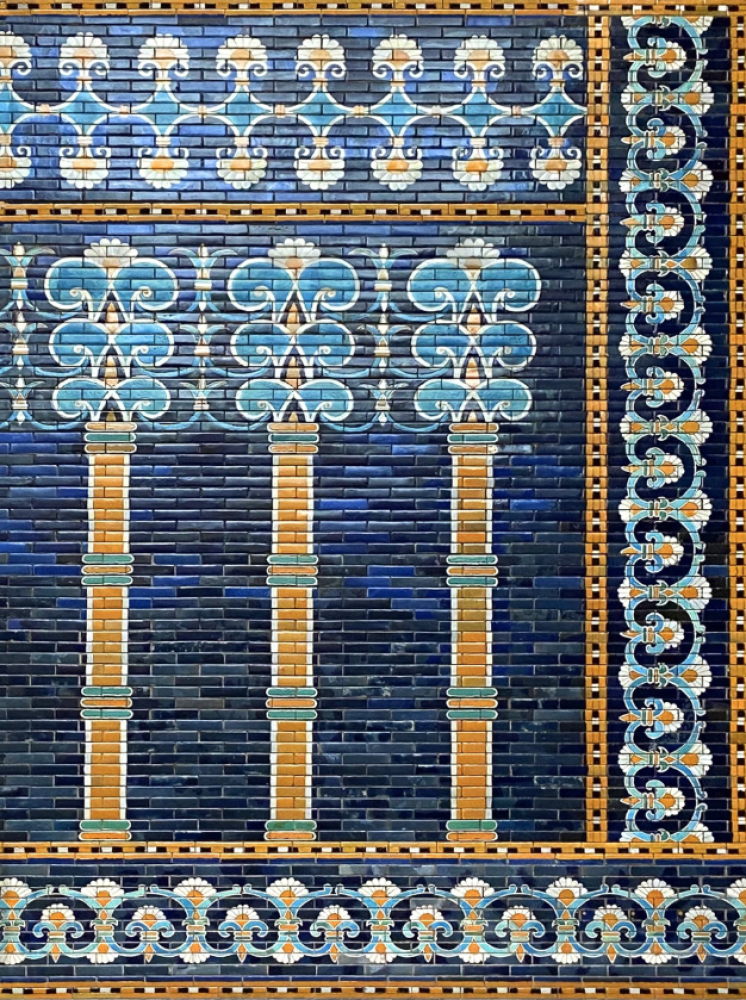
The legendary palace of Persepolis rose in the Zagros mountains of modern-day Iran in the 6th Century BC. Built in a time where pigments were a sign of great wealth, the bricks used in the frescoes and gates here are glazed with blue and yellow to represent sacred scenes and creatures. These are colours that remain intrinsically linked with Mesopotamian archaeology and is seen in Boghossian’s set inspired by this place.

Golestan
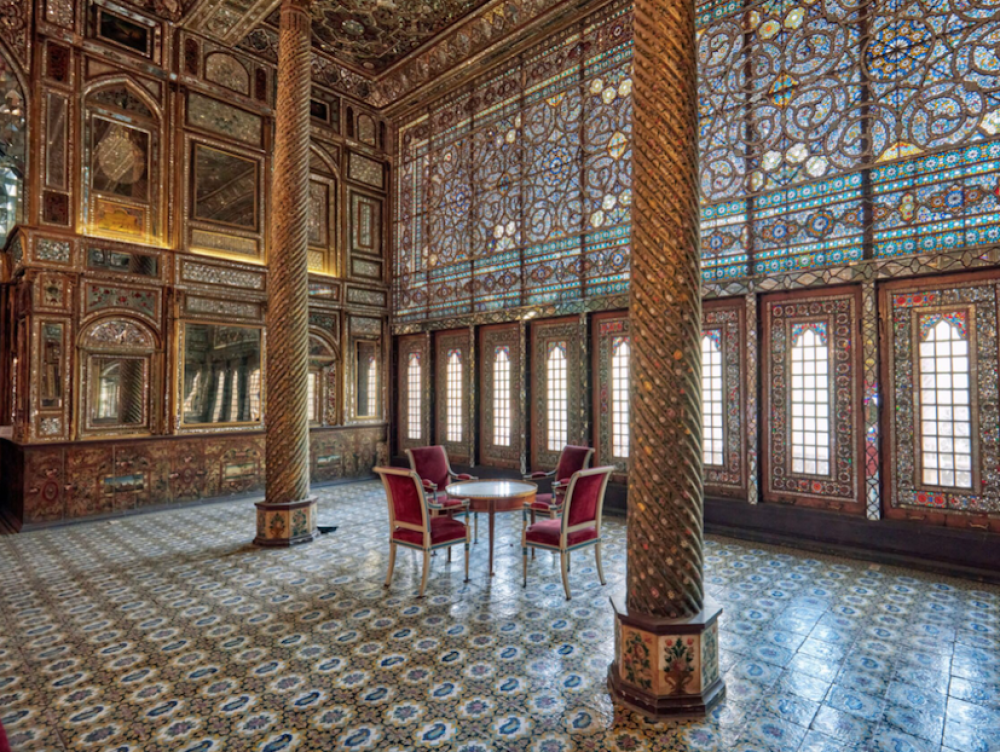
Known as the Palace of the Rose Garden, the Golestan Palace was built in the 16th Century and stands as a prime example of traditional Kadjar architecture. Boghossian took inspiration from the celebrated Hall of Mirrors and Hall of Diamonds here, which are both equally ornate.
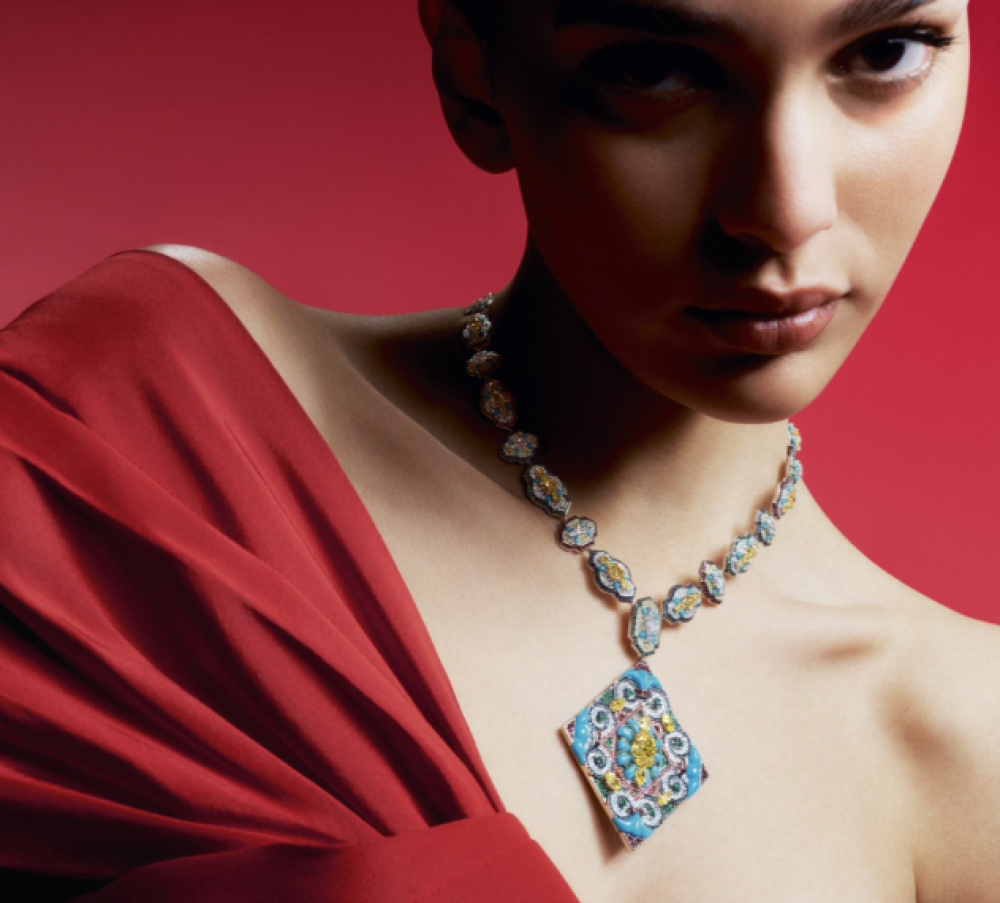
Amarna
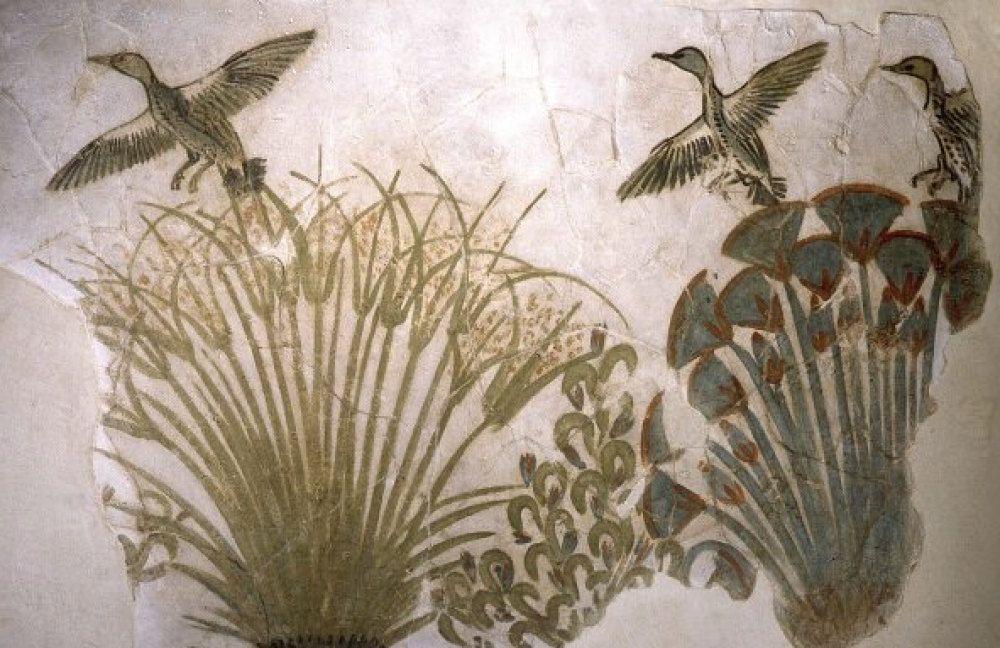
The great city of Amarna was erected under the reign of pharaoh Akhenaton, in the 14th Century BC. The North Palace was constructed for his wife Nefertiti and indicates how Ancient Egyptian arts was like at this time. Boghossian focused on paintings of the so-called “Green Room” in the Amarna palace, which shows an interpretation of the traditional papyrus motif, in a more abstract, geometric shape.
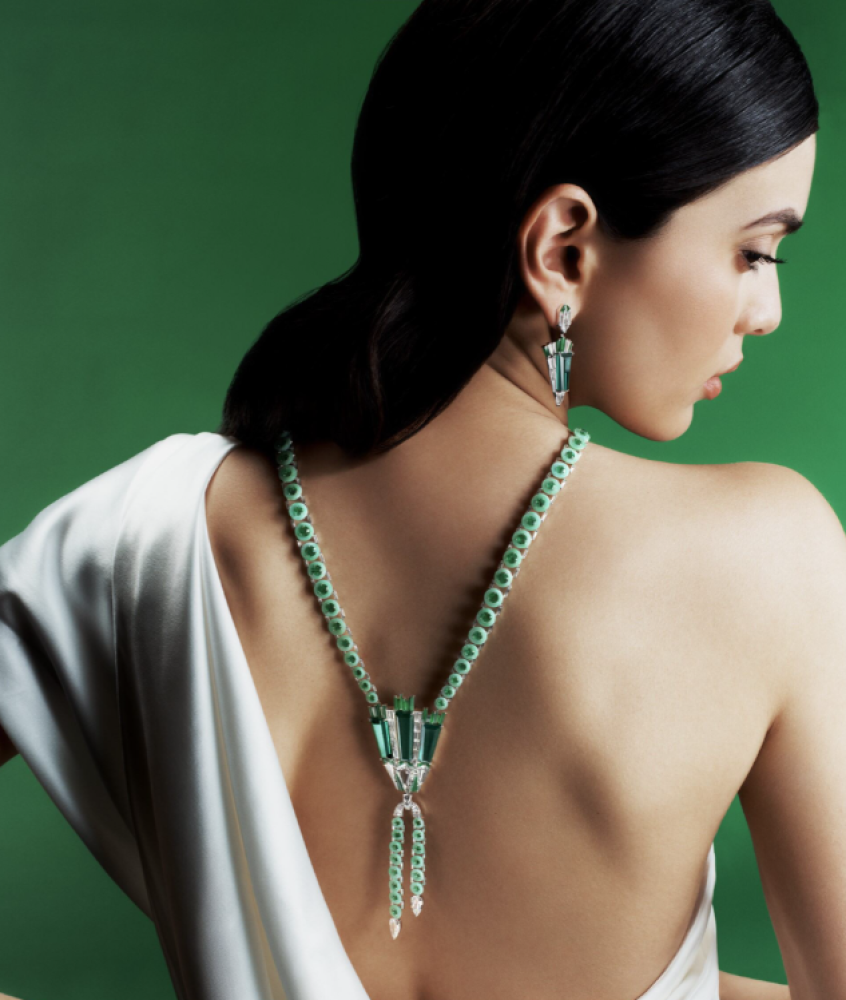
Rainbow Riad
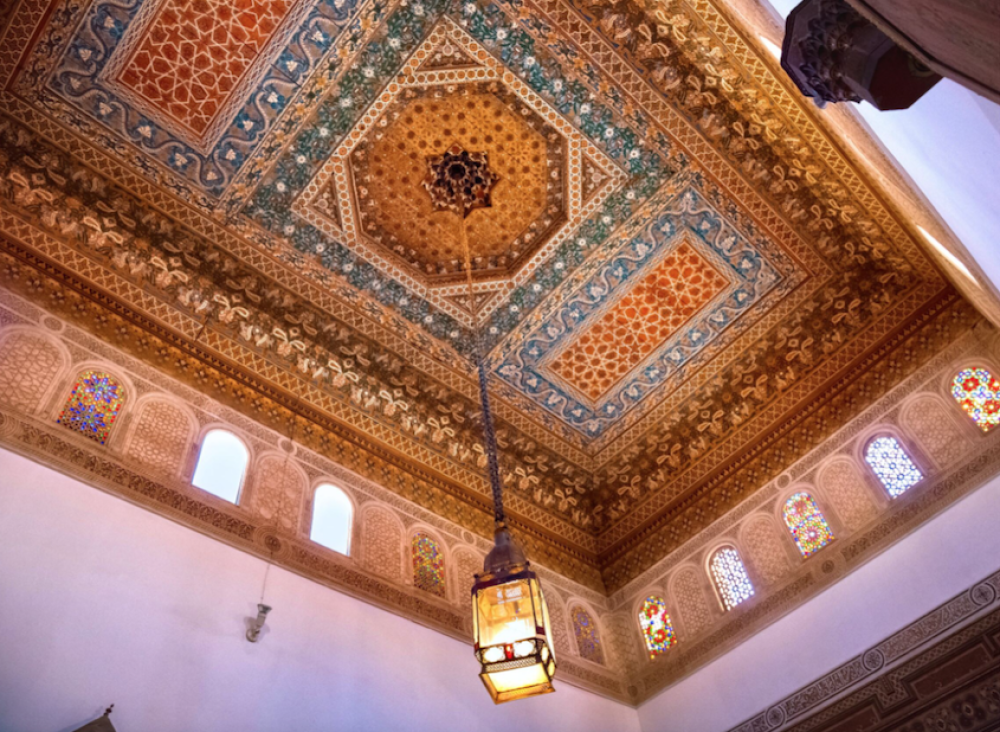
The Bahia palace in Marrakesh was commissioned in the late 19th Century by Si Moussa, the Grand Vizir of Sultan Moulay Hassan I. The best of Moroccan craftsmanship can be found across its eight hectares, especially in the highly ornate muqarnas or painted cedarwood ceilings. They fuel the imagination behind the pieces that reflect the geometry and rich palette of the place.

Red Fortress
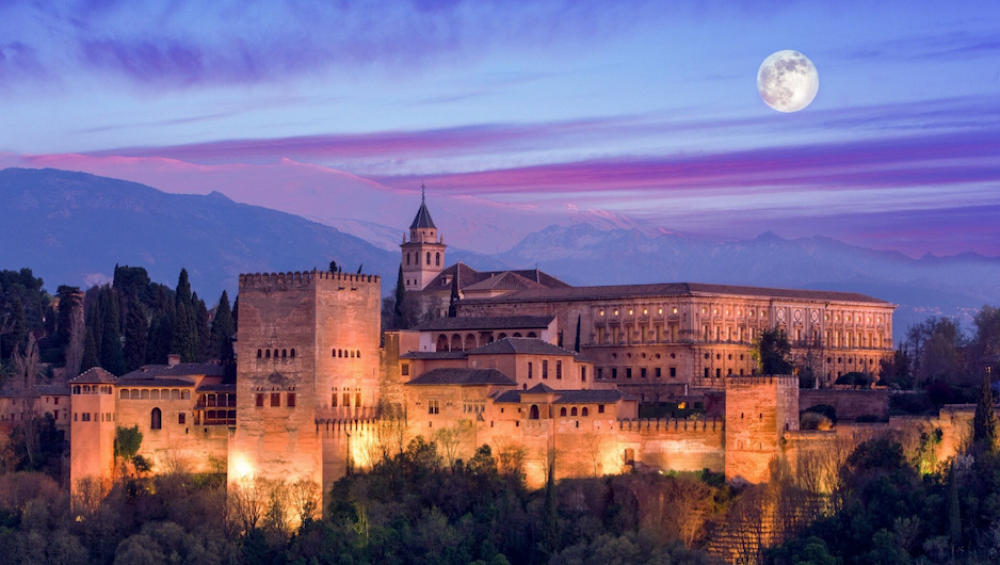
On the Sabika hill above the Spanish city of Granada, the Arab presence in Europe between the 8th and 15th Centuries is best seen in the Alhambra, meaning red fort or palace. Built in the 13th Century, it has survived the Reconquista and remains a much-visited monument to this day. The muqarnas (painted wooden carvings) here represent the seven levels of heaven and are equally as divine when translated to jewellery form.

Amber Room
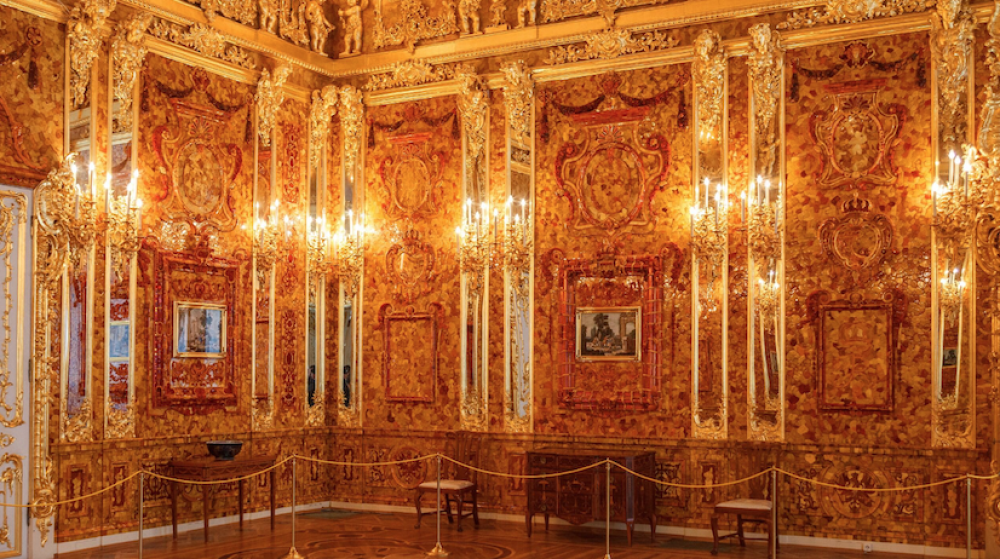
The Amber Room was conceived in 1701 for the Schloss Charlottenburg, before being installed in the Berlin City Palace. Kaiser Friedrich-Wilhelm I decided it to the Russian Tzar, Peter the Great, since he was so taken with the beauty of the place and it was rebuilt within the Catherine Palace near Saint Petersburg, using more than five tonnes of amber. However, the original Amber Room vanished after World War II and a renovated version was completed in 2003. The unusual history and materials of this space have inspired two contrasting interpretations of amber jewellery.

Potsdam
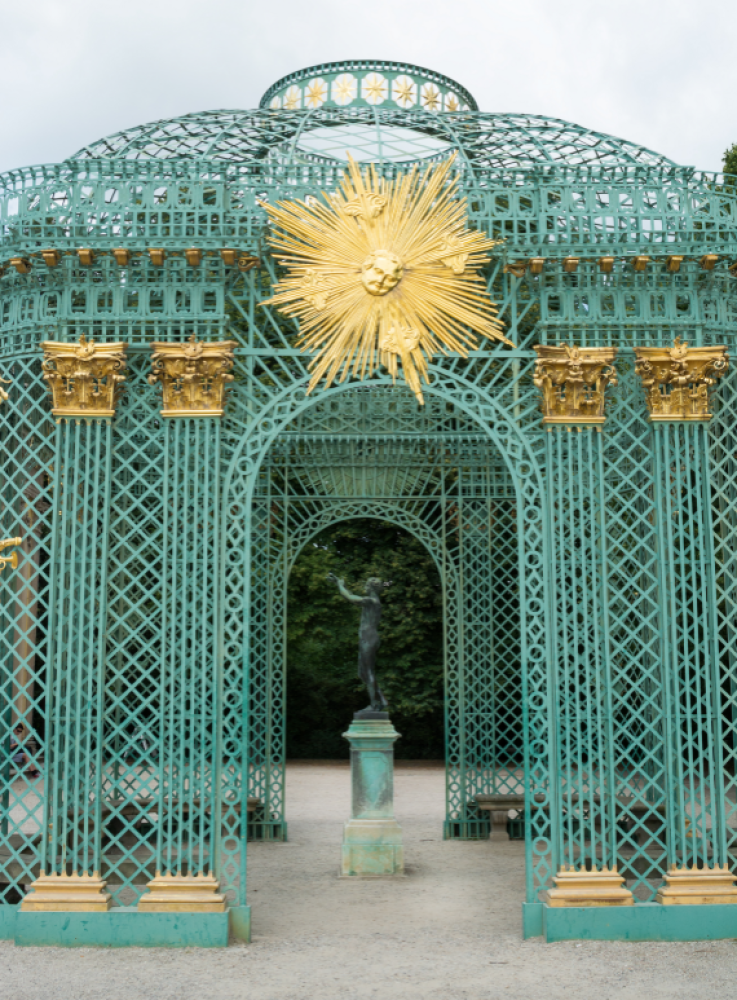
Built by Frederick the Great in the 1740’s as a countryside escape. It was constructed in the Rococo style with elements unique to Frederick’s wishes. The golden detailing of the Rococo frescoes, nature and music form the basis of this amazing place.

Petit Château
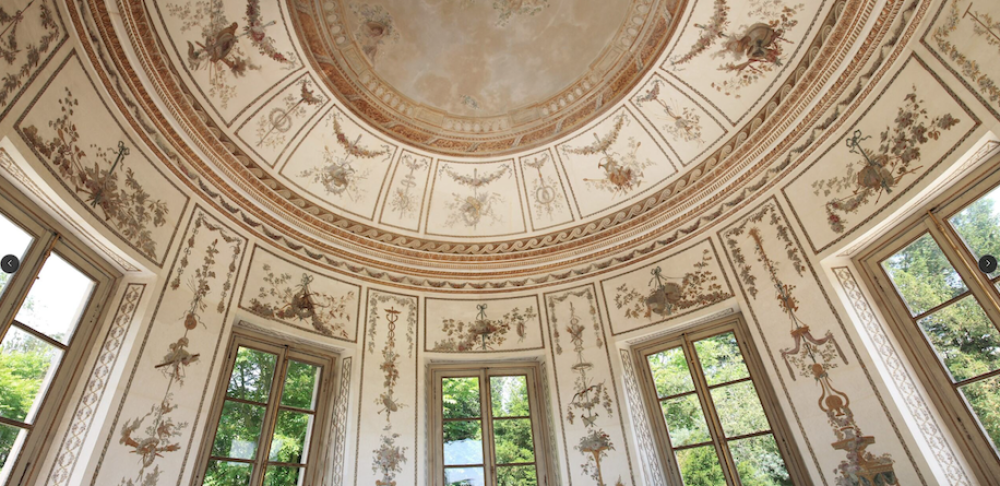
This “petite” annex of Versailles was conceived by architect Ange-Jacques Gabriel as a perfect neo-Classical gem in which to house the retinue of Louis XV. It was also Louis XVI’s gift to his new wife Marie-Antoinette, who enjoyed the simple lines and more remote situation offered by the Petit Trianon.

Regency Residence
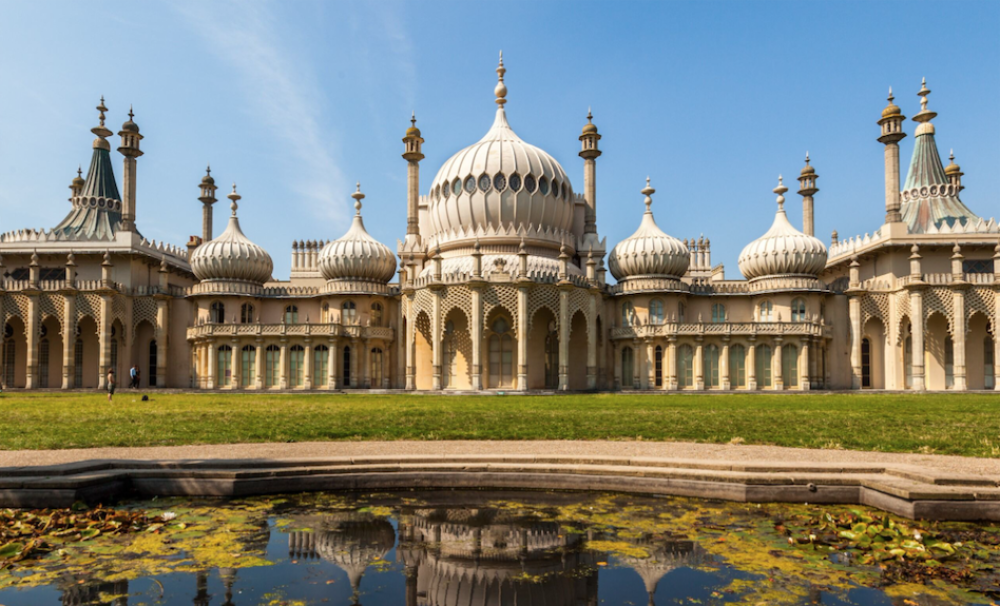
George IV visited Brighton in the late 18th Century, advised by his physician to bathe in the sea. The original house was renovated several times, most notably by architect John Nash, who extended the Royal Pavilion and gave it its unique Indo-Saracenic domes, completed in 1823. It remains one of its most famous landmarks, with its unexpected, highly spectacular architecture and interiors. Boghossian used the chandelier and the foliage here as their motif.

Also see: Qeelin: Harbour City boutique Grand Opening with Liu Shishi





